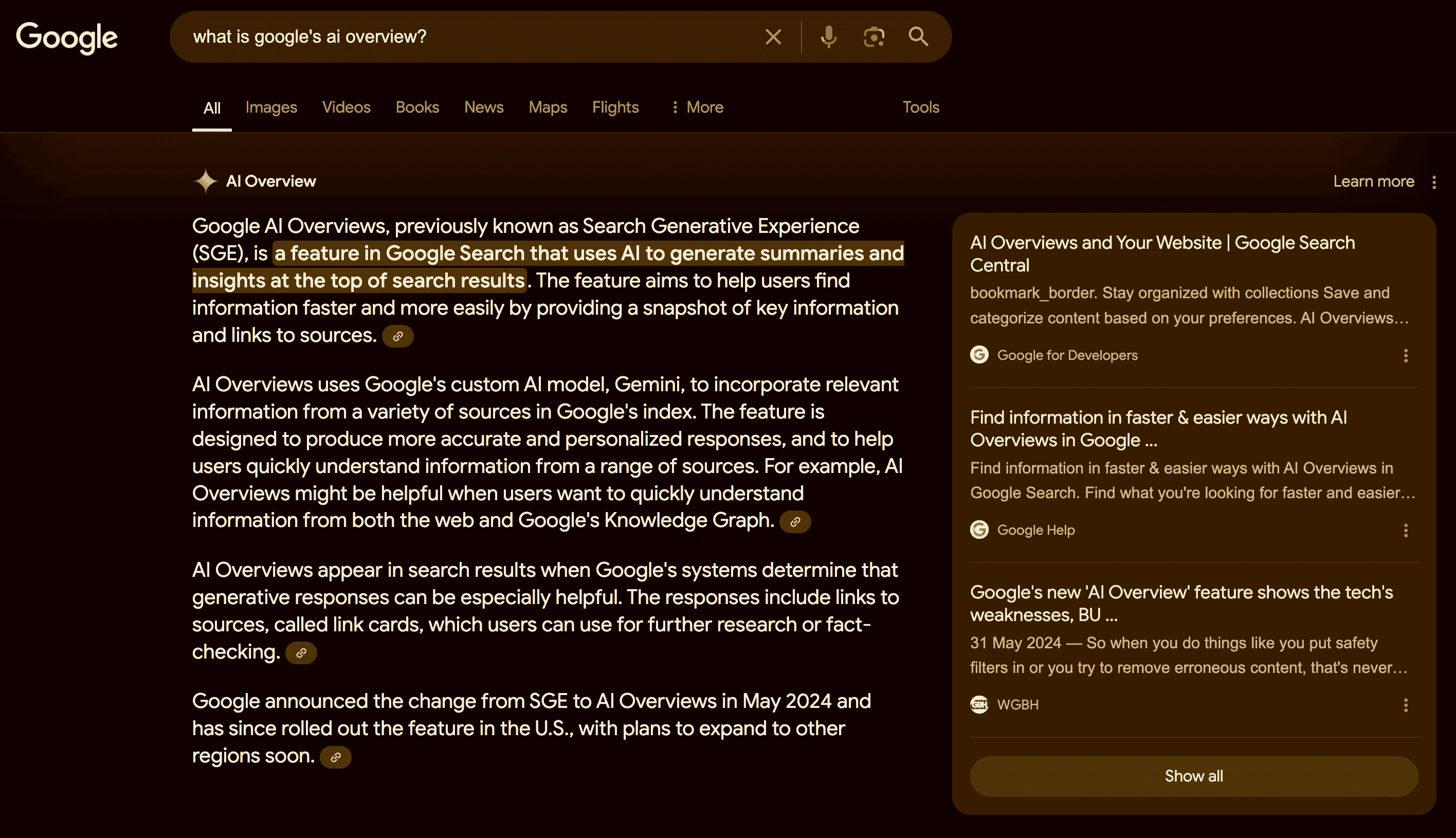Code that Ranks: Merging SEO Strategies with Software Development
Last updated on Sunday, September 10, 2023

Both software development and Search Engine Optimization (SEO) play an important role in today's competitive digital market. As marketers, advertisers, business owners, or students aspiring to excel in the dynamic field of digital marketing and advertising, understanding the seamless integration of these domains is essential to achieving online success. There is a unique benefit to this merger that can't be overlooked, especially by smaller and medium-sized enterprises.
SEO is fundamentally the compass that directs online visibility. It is a technique to improve a website's natural (unpaid) ranking on search engine result pages (SERPs). It involves optimizing your online presence so that search engines like Google, Bing, and Yahoo can quickly find you.
SEO is the route to bringing in organic traffic, establishing brand credibility, and ultimately generating conversions for businesses of all sizes. A well-designed SEO strategy can dramatically increase a website's visibility and aid in its acquisition of the highly sought-after top spots on SERPs. But this is where the story gets complicated: the road to successful SEO isn't a straight one; it's intricately linked to the software development industry.
The Difficulty of Combining Software Development and SEO
Software development and SEO have traditionally operated in separate industries. Marketers planned to increase visibility, and programmers from a custom software development company wrote code to guarantee usability and aesthetics. However, this division is no longer viable in the digital environment of today. Technical nuances are important for search rankings as search engines become more sophisticated and discriminating. For instance, Google's ranking algorithm takes into account structured data, mobile friendliness, and website speed. This means that optimizing the website's code is just as important as focusing on keyword optimization and content creation.
Say hello to "Code that Ranks"
Imagine that the code of your website serves as a foundation for search success rather than just a digital skeleton. "Code that ranks" is the result of the dynamic interaction between software development methods and SEO tactics. It's an art to write code that not only offers a seamless user experience but also complies with SEO best practices, raising your website higher on the search engine results page.
Consider it as optimizing not only your store's display but also its basic layout. Every component, from the entrance to the aisles, is created with user experience and SEO in mind thanks to the "code that ranks" guarantee. It's not a compromise; rather, it's a seamless fusion that raises the bar for your online presence.
The Intersection of SEO and Software Development

The Age-Old Divide and the Changing Situation
In the past, software development and SEO were two distinct industries. While developers concentrated on building useful and aesthetically pleasing websites, marketers concentrated on keyword research, content optimization, and backlink building. It frequently led to fragmented efforts and missed opportunities for synergy because of the distance between these two worlds.
But as search engines have gotten older, their algorithms have improved. They now assess a website's technical attributes, including its loading time, mobile friendliness, and structured data, in addition to its content. This change has accelerated the incorporation of SEO tactics right at the core of the development process. SEO is now a crucial factor in the equation, so developers cannot afford to ignore it.
Benefits of SEO and Software Development Integration
Software development combined with SEO tactics benefits businesses in a wide range of ways. First of all, it streamlines processes and makes sure that both teams are working toward the same objective. When marketers and developers work together, the result is a website that not only performs well in search engine results but also offers a top-notch user experience.
Second, incorporating SEO principles into the development process results in a more efficient workflow. The code is written from the ground up to take these factors into account, as opposed to retrofitting SEO components into an already-existing website. This method reduces the chance of missing important SEO elements while also saving time.
Additionally, "code that ranks" secures the future of your online presence. A website that is optimized for both technical SEO and user experience is better able to respond to changes in search engine algorithms. In the constantly changing digital landscape, this synergy gives you a competitive advantage.
Fundamentals of Technical SEO for Developers
Software developers need to understand the technical principles underlying search engine visibility as they enter the world of SEO. These ideas form the "code that ranks" building blocks and the basis for successful SEO-driven development.
Optimization for Website Performance and Speed
Speed is more than just a virtue in the digital world; it is a requirement. In addition to frustrating users, slow-loading websites also anger search engines. For instance, Google takes into account page loading time when determining rankings. Slow websites offer a poor user experience, so they are less likely to rank well.
Developers must optimize website speed using techniques like content compression, browser caching, and a decrease in HTTP requests. By using Content Delivery Networks (CDNs), website content can be distributed among servers all over the world, resulting in faster page loads for users wherever they are.
Mobile Usability and Responsiveness
Mobile responsiveness is essential because a sizable portion of internet traffic now comes from mobile devices. The mobile version of a website is given priority in indexing and ranking thanks to Google's "mobile-first" indexing policy. Therefore, it is crucial to use responsive design; the layout and functionality must automatically adjust to different screen sizes.
For mobile devices, developers must make sure that buttons are touch-friendly, font sizes are readable, and images are scaled properly. Bounce rates and user engagement on mobile devices have a direct impact on search engine rankings.
Structured Data and Schema Markup
The secret to SEO success lies in structured data. It is the language that search engines use to understand and categorize content on websites. A type of structured data known as schema markup gives context to content elements so that search engines can display rich snippets, which are additional details in search results that can significantly increase click-through rates.
To give search engines useful information about products, reviews, events, and more, developers should incorporate schema markup into their code. This improves the look of search results as well as the overall SEO performance of the website.
Website Structure and Architecture
A website's architecture has an impact on both search engine crawling and user experience. Users can navigate with ease thanks to a clear and organized structure, and search engines can more easily comprehend the hierarchy of content. The website's navigation should be simple to use with logically organized categories and subcategories, according to the developers.
Additionally, improving internal linking, or the connections between pages on a website, helps search engines find and index content more effectively. This architecture improves user engagement while also strengthening the SEO foundation.
Meta Descriptions and Page Titles
The first elements users see in search results are page titles (title tags) and meta descriptions. These serve as a succinct summary of the information on a webpage. Developers must make sure that every page has a distinct, evocative title tag that contains pertinent keywords. Although it is not a direct ranking factor, the meta description affects click-through rates. A compelling meta description may persuade users to click on your link, which may harm search engine results.
Canonicalization
When there is duplicate content on a webpage, the preferred version is identified through the process of canonicalization. Duplicate content can reduce a website's SEO potential because it may be challenging for search engines to decide which version to rank. Developers should use canonical tags to identify a page's primary version so that search engines will give the right URL a higher ranking.
Robots.txt and Sitemaps
Search engine bots can read instructions in the robots.txt file about which pages to crawl and which to skip. It is essential for preventing sensitive or non-essential pages from being indexed. To effectively direct search engine bots, developers should create and maintain an accurate robots.txt file.
On the other hand, sitemaps offer an exhaustive list of all pages on a website, assisting search engines in efficiently crawling and indexing content. To help users find content, developers should create and submit XML sitemaps to search engines.
Developers can create "code that ranks"—code that not only powers a useful and visually appealing website but also seamlessly complies with SEO tactics—by comprehending and putting these technical considerations into practice.
Development Driven by SEO: A Novel Method

New tactics are being developed to address the shifting dynamics of online visibility as the digital landscape changes. SEO-driven development is a paradigm shift that combines the worlds of software development and search engine optimization. For a website to reach its full potential, these two domains must come together as a harmonious partnership rather than continuing to exist as separate entities.
Influence on Prioritization and Planning
The introduction of SEO-driven development marks the development of a fresh method for organizing projects and tasks. Traditionally, marketers optimized content while developers concentrated on writing code. But with this new strategy, SEO factors are taken into account from the very beginning of development.
Developers and marketers work together to establish SEO goals at the outset of a project. What key phrases should be targeted? What specific technical factors are important for ranking? This team effort makes sure that the code is written from the beginning with SEO in mind.
A Consistent Strategy
In SEO-driven development, there is no longer a distinction between marketers and developers. A convergence of expertise is present as opposed to different teams working independently. While marketers gain a deeper understanding of how code affects search rankings, developers gain insights into the subtleties of SEO.
Decision-making becomes more efficient as a result of this coordinated approach. For instance, how technologies, frameworks, and plugins will affect SEO influences the choice in addition to functionality. This all-encompassing perspective results in the design of websites that are not only aesthetically pleasing but also well-suited for search engine success.
Workflows for Collaboration: Closing the Gap
Success in the digital world frequently comes from a carefully orchestrated symphony of various skills. The true star of the show when it comes to fusing SEO tactics with software development is collaboration. To achieve the ultimate goal—a website that not only looks good but ranks highly—the skills of SEO specialists and the technical prowess of developers must seamlessly intertwine.
Challenges on the Horizon
Let's not fool ourselves into thinking that this alliance is all sunshine and rainbows, though. Challenges can result from varying priorities and perspectives. While developers are hard at work creating pixel-perfect interfaces, marketers are chasing after the newest keyword trends. Understanding and empathy are necessary for bridging this gap.
Priorities and Viewpoints: Reaching a Consensus
SEO experts prioritize meta tags, content optimization, and keywords. On the other hand, developers are deeply involved in writing code that guarantees a positive user experience. The difficulty arises when these priorities diverge, possibly resulting in miscommunications and conflicts.
The answer? It's crucial to promote understanding among all parties. Developers should recognize the value of keywords and user intent, while SEO specialists should understand the complexities of coding. This knowledge transfer fills the gap and guarantees that every line of code adheres to SEO principles.
Developing an Organized Workflow
A well-organized workflow is essential to successful collaboration. Developers and SEO professionals must communicate frequently. Both teams should collaborate from the beginning of the project rather than treat each phase independently.
Include SEO objectives in the project roadmap. Establish checkpoints where marketers and developers can meet to assess progress and coordinate strategies. These checkpoints are integrated to create a digital masterpiece that combines aesthetics, functionality, and search visibility without feeling like just another website.
Code for Automating SEO Procedures
Automation is the magic wand of the digital age for streamlining procedures and increasing productivity. Developers can use this wand to create SEO-related tools and scripts that automate various tasks, minimizing manual labor and the possibility of error.
Custom Tools and Scripts: The Developer's Arsenal
Imagine having a digital assistant that continuously evaluates the effectiveness of your website and suggests opportunities for optimization. Customized programs and tools are useful in this situation. These specialized programs can check for broken links, examine keyword rankings, and keep track of website speed automatically.
Scripts written by developers can crawl websites' content to check for compliance with SEO best practices. An example of a script that could be used is to automatically add alt text to images, which is important for both SEO and accessibility.
The Benefits of Automation
There are many benefits to using code to automate SEO. The main benefit is the time savings. Manually intensive tasks can be completed in a matter of minutes. Because of this efficiency, previously unavailable funds are made available for use in other, more strategically important endeavors.
The potential for human error is also reduced thanks to automation. In the intricate world of SEO, missing a vital piece can have devastating effects. By making sure nothing gets missed, automation is like having a safety net under your SEO strategy.
Furthermore, automation allows for constant tracking. Since websites are dynamic things, it's important to evolve alongside them. Automated tools can quickly identify both an increase in loading times and a sudden drop in search rankings.
The Role of Server-Side Rendering (SSR) and SEO

The crucial role that server-side rendering (SSR) plays in writing code that performs must be taken into consideration. With SSR, web pages are created on the server and then sent as fully rendered HTML to the browser. This contrasts with client-side rendering (CSR), where the browser first loads the page's basic structure before requesting more information from the server to render it.
Why is SSR important? Search engines favor websites that offer a seamless user experience. Rankings are more likely to be higher for pages that load quickly and display content immediately. SSR is the ideal solution for this because it sends fully rendered content right to the browser, resulting in quicker loading times and a better user experience.
SSR-enhanced Search Visibility
Think about a user clicking on a search result and then having to wait what seems like forever for the page to load. It's a frustrating experience that might cause a lot of users to leave quickly and engage less. Search engines take note of this behavior and adjust their rankings accordingly. In this situation, SSR excels.
Pages load quickly with SSR, enticing users with nearly instantaneous content display. This raises search rankings and enhances user engagement. Search engines are aware that your website offers a better user experience, increasing the likelihood that it will show up in the sought-after top positions on the search results page.
Balancing Performance and SEO
SSR is an effective tool for improving SEO, but it's crucial to balance performance and functionality. Even highly interactive, complicated websites occasionally benefit from CSR. It all comes down to evaluating the user's needs and the nature of your content.
Remember that while SSR is a powerful technique, it is not a panacea as you explore the world of SSR. SSR can be used in conjunction with other technical SEO strategies to boost your website's rankings, such as mobile responsiveness and structured data implementation.
Measuring Success: The Intersection of Metrics
Success isn't a nebulous concept in the world of digital marketing and advertising; it's measurable, quantifiable, and data-driven. Software development and SEO strategies can be combined, and the result is a playground for metrics that compellingly depict development.
Unveiling Success: Key Performance Indicators (KPIs)
Key performance indicators (KPIs) are in the spotlight when it comes to gauging the success of your initiatives. You evaluate the success of your combined SEO and software development efforts using these benchmarks.
Organic Traffic
Your website's lifeblood is organic traffic. It stands for the visitors who discover your website via search engines as a result of the meticulously carried out optimization techniques. You can evaluate the success of your SEO strategies by tracking organic traffic. Are you reaching the right demographic? Do your keyword strategies seem to be working?
Search Rankings
What position does your website hold in the list of search results? Monitoring your search results is similar to watching your website soar to the highest points of online visibility. Are you getting closer to those coveted top positions? Are you seeing results from your efforts in the form of higher search rankings? This metric is a clear indicator of how well your SEO tactics and the website's code work together.
User Engagement: The Human Connection
User engagement can be gleaned from metrics like bounce rate, time on page, and click-through rate. Are visitors staying longer and looking at more pages, or are they leaving after a brief visit? The level of user engagement on your website is a clear indication of how well it meets user's needs and expectations.
In Conclusion
We are on the verge of a digital revolution as we negotiate the challenging process of fusing SEO tactics with software development. This coming together of two ostensibly separate worlds is altering how we view online success.
Weaving the fabric of collaboration, automation, technical prowess, and metrics will be our final task on this journey. These components work together to create a connection that appeals to both users and search engines. Be prepared for a conclusion that perfectly captures "code that ranks" as a masterpiece that is more than just code and a testament to the influence of harmony in the digital age.

Article by:
Nazar Kvartalnyi
COO at Inoxoft
Master’s Degree in Computer Science and Mathematics. Microsoft certified professional and .Net specialist with experience in project management and mentorship. Since 2015 co-founder and COO at Inoxoft.




